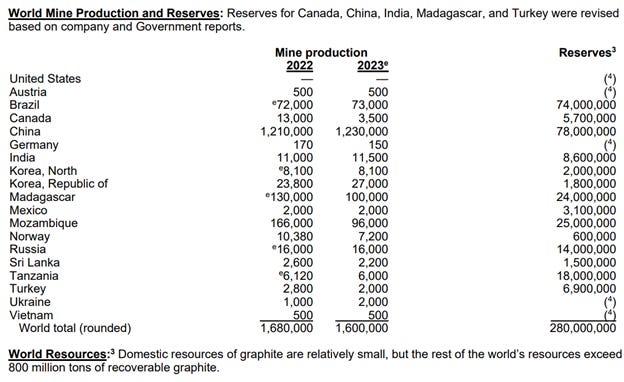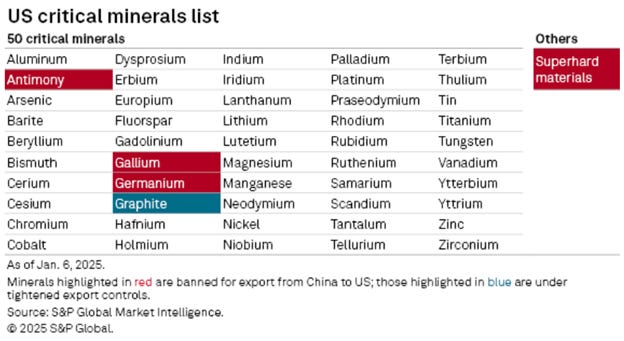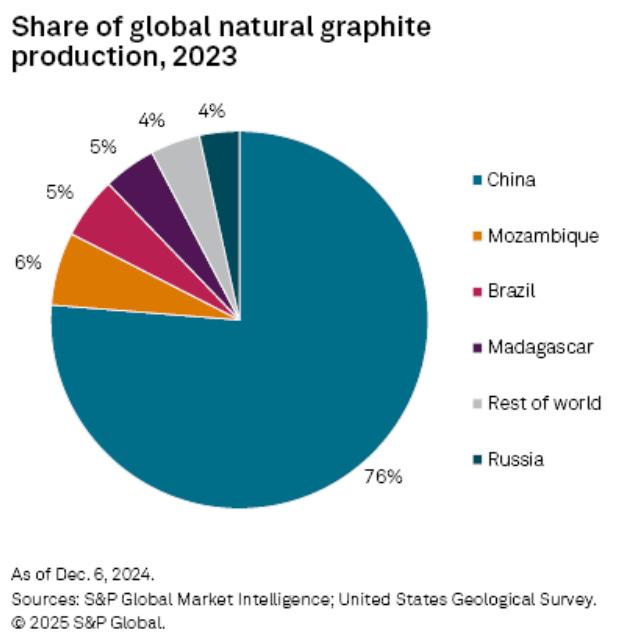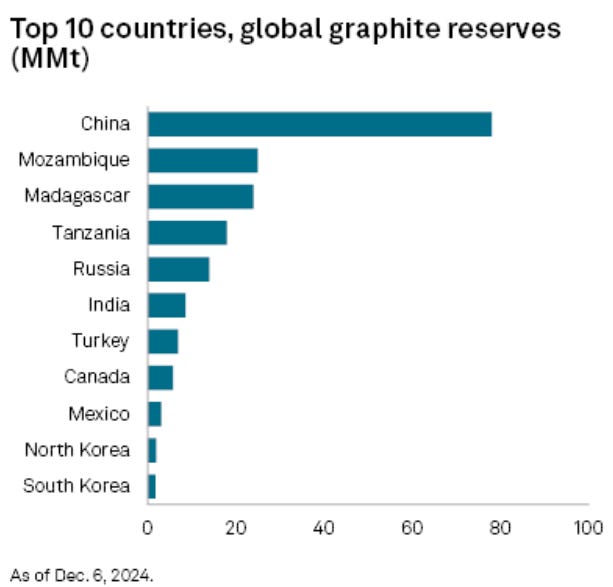How China just built a synthetic superdiamond. And why nobody else can.
It's made of graphite, and China refines all the graphite in the world
Bullets:
Chinese researchers have synthesized a nearly pure "superdiamond".
It is of a revolutionary shape--hexagonal--with immediate applications in high-end machining, cutting, and polishing.
But this diamond was made of graphite, instead of carbon. Natural diamonds of similar hardness come from carbon, and are located in impact craters, making them very rare and small.
This Chinese discovery will allow these super-hard "superdiamonds" to be built in labs, with graphite.
China and its BRICS trading partners have near-monopolies on the supply of graphite, and China itself refines nearly all of the graphite globally. And China has placed new export restrictions on graphite, choking off much of the supply to Western markets.
Report:
Good morning. When we learn about new breakthroughs that are applicable in heavy industry, like this one here, it’s then that we can see China’s enormous advantages not just in science and technology, but in their application. And that’s because of China’s industrial sector, and their dominance – almost total, monopolistic dominance – across the raw materials sectors and supply chains. We know all about China’s factory sector. But what is more impressive, but much less widely known is China’s supply chains. That’s where China’s advantages run very deep.
China already has a monopoly on the manufacturing of synthetic diamonds. So much so, that they are wiping out profit margins for DeBeers, and other producers of natural diamonds. Diamonds are used across a wide range of manufacturing industries, and are commonly used in cutting and polishing. Chinese researchers have created a super diamond, high in quality, and of a revolutionary shape.
Before now the hardest of the hard diamonds were in areas where a meteor hit the earth and created an impact crater. That makes them rare, and small, and only in a small handful of places.
Now China will build them in labs. Their process creates nearly pure, hexagonally shaped diamonds, made from graphite. So graphite is the necessary raw material to synthesize these superdiamonds. They’re 40 percent harder than a natural diamond, with high thermal stability, and great potential in industry.
A few years ago a US team of researchers created hexagonal diamonds, and found that they would be preferable for many of the applications that feature cubic diamonds today. The Chinese superdiamond is also of that shape—hexagonal—and made of graphite. And China and their friends have all the graphite, and graphite is their restricted list for our industries to buy.
It’s not an outright ban, such as on gallium, germanium, antimony, and other materials with dual-use military and civilian applications. But Beijing is tightening restrictions on graphite.
This poses a significant challenge to the United States. China is 77% of the global production of natural graphite, 95% of the synthetic graphite, and basically all of the refining of graphite, wherever the source. The US has less than 1 percent of the world’s proven graphite reserves, and we import all that we use.
This report is from the US Geological Survey, and their section for graphite. And the most important rows on this table are at the very top and the very bottom.
Mine production of graphite by year is zero—top line. Net import reliance, bottom line, 100% every year.
This one is graphite mining production, by tons. China is far bigger than everyone else combined, and a country doesn’t need to produce much at all to make the list. Germany’s output was only 150 tons, and gets a participation trophy just for showing up.
Standard and Poor’s has much of the same data. Graphite is vital in batteries and clean energy. This is the current critical minerals list for the United States, and we’re heavily dependent on China for almost all of them.
In red, are the materials on outright bans from China. ((Note: Tungsten has also been added to the list for a hard ban.)
And here’s the kind of chart we see every day in supply chain management. It’s all China, or China’s friends, that own the chain:
China is 76% of the graphite mining, Mozambique is not a BRICS country but is very friendly to China because of Chinese Belt and Road investments there. Brazil is BRICS. Russia is BRICS. Those four are over 90%.
Almost the same group of countries comprise the table for proven graphite reserves. So looking at these data, what are the countries known to be more friendly to the United States and Europe, than with China? Canada. Mexico—maybe, depending on the day. And South Korea. Remember too, that today China refines almost 100% of all the graphite in the world. It comes out of the ground in Canada and Mexico and is shipped here for refining.
This is all to say that when we hear of a new breakthrough, like in iron smelting or diesel engines or battery technology or here in superdiamonds—it is very often now the Chinese who figure it out.B ut it doesn’t really matter where the research happens to be done. Because it’s in China where it will be applied, and turned into actual products. China is the world’s factory, and China’s also got the raw materials. And that makes all the difference.
Resources and links:
China’s New Graphite Restrictions
https://www.csis.org/analysis/chinas-new-graphite-restrictions
China Imposes Its Most Stringent Critical Minerals Export Restrictions Yet Amidst Escalating U.S.-China Tech War
https://www.csis.org/analysis/china-imposes-its-most-stringent-critical-minerals-export-restrictions-yet-amidst
South China Morning Post, Chinese scientists make rare, ultra-hard, pure ‘super diamond’ in the lab
US Geological Survey, Mineral Commodity Summaries 2024
https://pubs.usgs.gov/periodicals/mcs2024/mcs2024-graphite.pdf
China responds to US restrictions with export ban on select critical minerals
https://www.spglobal.com/market-intelligence/en/news-insights/research/china-responds-to-us-restrictions-with-export-ban-on-select-critical-minerals







Thank you Kevin, I always find your articles educational, and more than a little concerning for someone stuck in the quite ignorant 'west' (the UK).
I thought graphite is pure carbon, chemical composition-wise.